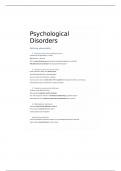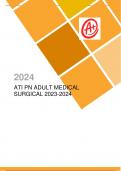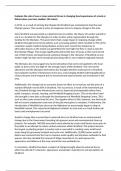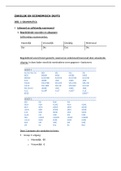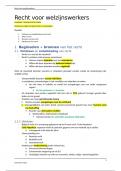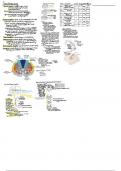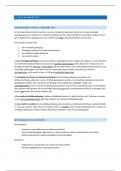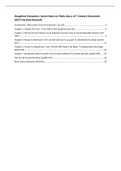College aantekeningen
Psy 1004F - Psychological Disorders Notes
- Vak
- Instelling
This is a comprehensive and detailed note on psychological disorders Covers abnormality (what is is, how to define it), the history of psychological disorders, diagnosis and classification, anxiety, mood disorders, eating disorders, schizophrenia, mental health care in South Africa, cultural variat...
[Meer zien]
